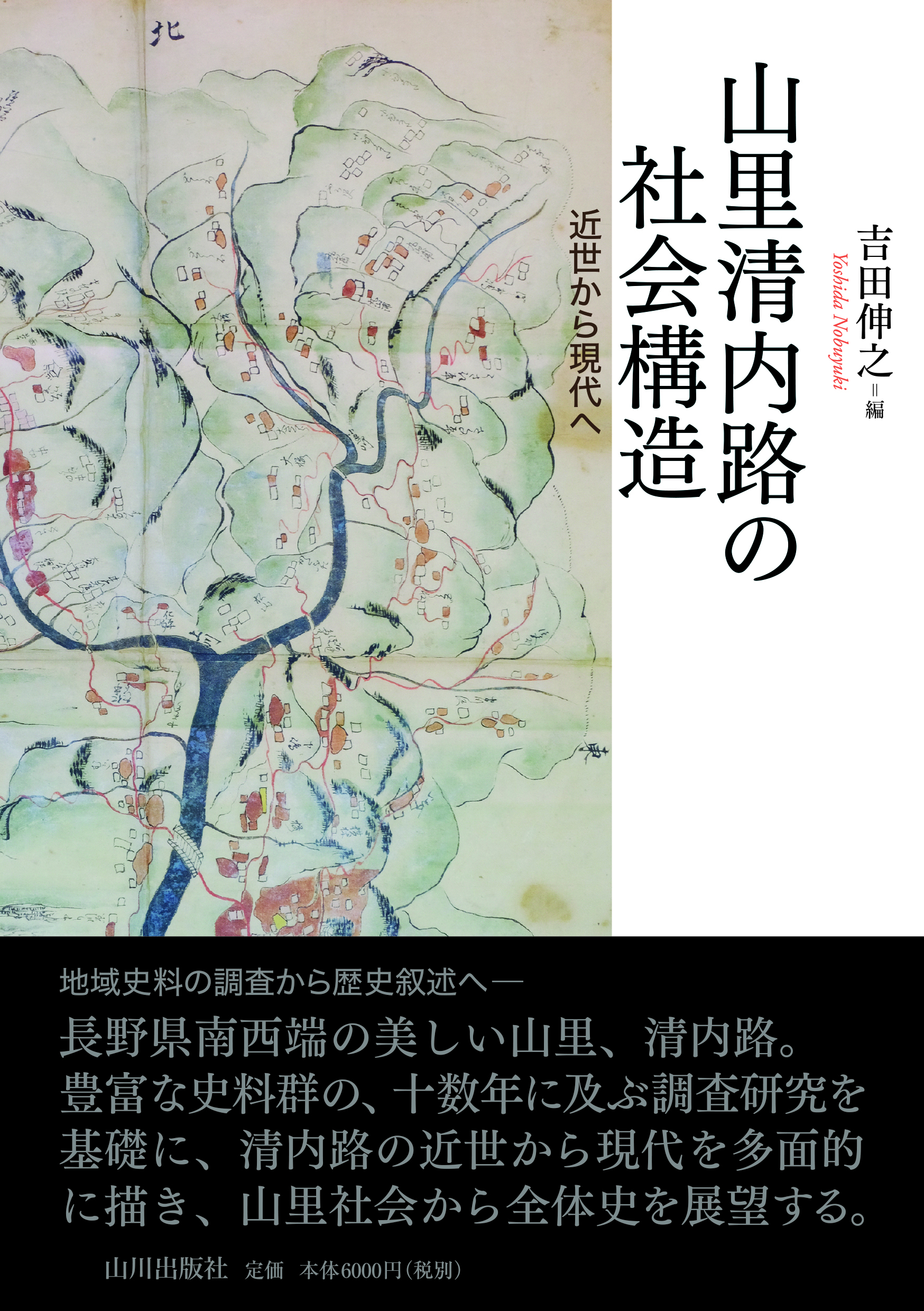
Title
Yamazato Seinaiji no Shakai Kozo (Social Structure of a Mountain Village “Seinaiji” - From Early Modern to Today)
Size
416 pages, A5 format
Language
Japanese
Released
September, 2018
ISBN
978-4-634-52025-7
Published by
Yamakawa Shuppansha
Book Info
See Book Availability at Library
Japanese Page
This book is the result of a joint research project based on the investigations of historical materials conducted by a research group called “Seinaiji: History and Culture,” led by Professor Emeritus YOSHIDA Nobuyuki of the University of Tokyo. This project, which has been conducted since September 2003, used historical materials that have been handed down to Seinaiji, located in the southwestern corner of Shimoina-gun, Nagano Prefecture.
Professor YOSHIDA Nobuyuki summarizes the main purpose of this collection of articles into two aspects as follows. The first is to show that the “front line” of historical research lies in actual sites of fieldwork investigations, i.e., local communities, and to reconfirm the meaning and significance of this fact. The second is to chronologically study the history of a mountain village “Seinaiji,” from various aspects, to clarify the structure of the diverse and complex local community and its transformation in a concrete and detailed manner.
The author of this article, AKAGAWA, participated in the research activities conducted by Professor YOSHIDA Nobuyuki from a sociological standpoint. A questionnaire survey was then conducted in 2012 with the residents of the two villages (Kami-Seinaiji and Shimo-Seinaiji) within Seinaiji. This survey aimed to empirically examine how social capital can ensure the sustainability of local communities in a society with a declining population. In particular, we explored which elements of social capital (SC) influence the well-being (subjective sense of well-being) of people living in the two areas, and the results are reported in Chapter 14 of this book.
To measure social capital, we used the frequency of participation in social activities such as neighborhood associations, community associations, cleaning activities, and volunteer work, as well as the level of satisfaction with various aspects of life (purpose in life, family relationships, friendships, domestic finances, etc.). In this chapter, in particular, we interpreted that satisfaction with friendships was an indication of self-evaluation of one’s personal social network, and satisfaction with family relationships was an indication of self-evaluation of SC within one’s family. Finally, we examined how much influence these concepts would have on the subjective sense of well-being.
For the subjective sense of well-being, respondents were asked to indicate the following. They had to report how ill they physically felt due to chronic diseases, how ill they physically felt due to aging, how ill they physically felt due to colds and other non-chronic diseases. Further, they were asked to indicate how much pain they experienced due to injuries, and how depressed they felt mentally, using a five-point scale (very much, a little, not sure, not much, hardly). These scores were simply added up. It is known that the subjective sense of well-being is strongly correlated with the objective status of well-being. Respondents aged 40 and above were included in the analysis.
A multiple regression analysis was conducted for each of the two areas, using the subjective sense of well-being as the dependent variable. Gender, age, frequency of participation in social activities, and satisfaction with purpose in life, friendships, family relationships, and domestic finances were used as the independent variables. As a result, it became clear that, in Kami-Seinaiji, the more people were satisfied with their purpose in life, the higher their subjective sense of well-being. Additionally, in the Shimo-Seinaiji, the more people were satisfied not only with their purpose in life but also with their friendships, the higher their degree of well-being. Thus, Kami-Seinaiji was named the “Community of Well-being Founded on Purpose in Life,” where the more satisfied people are with their purpose in life, the higher their level of well-being. Shimo-Seinaiji was named the “Community of Well-being Founded on Friendships,” where the more people are satisfied with their friendships, the higher their level of well-being.
While this chapter is an empirical study based on sociology, the other chapters are devoted to the enriched interpretation and analysis of historical documents by young historians in the Yoshida Seminar. Please refer to those chapters as well.
(Written by AKAGAWA Manabu, Professor, Graduate School of Humanities and Sociology / 2021)



 Find a book
Find a book

